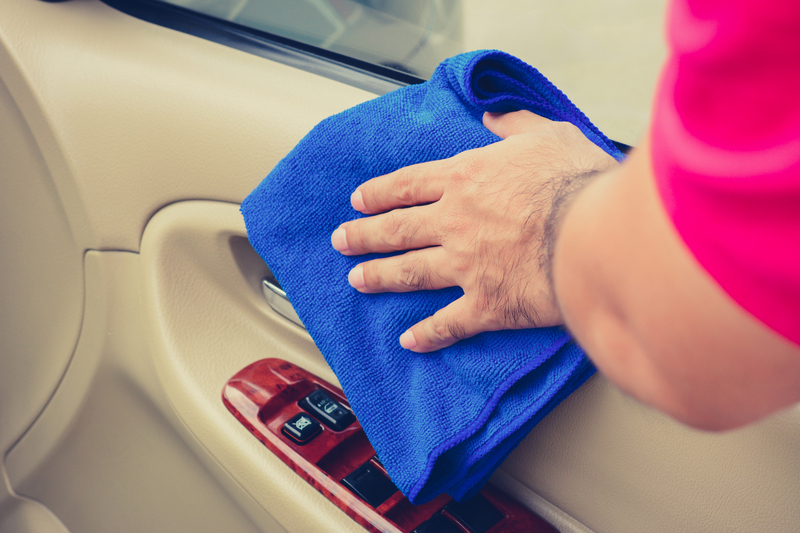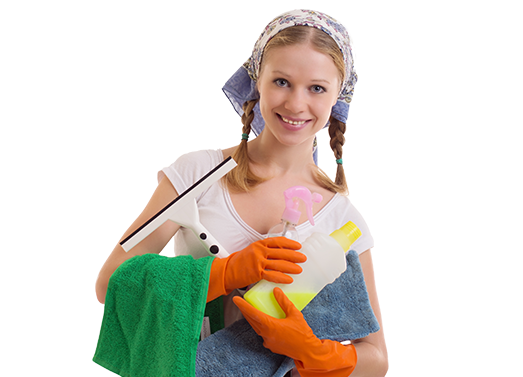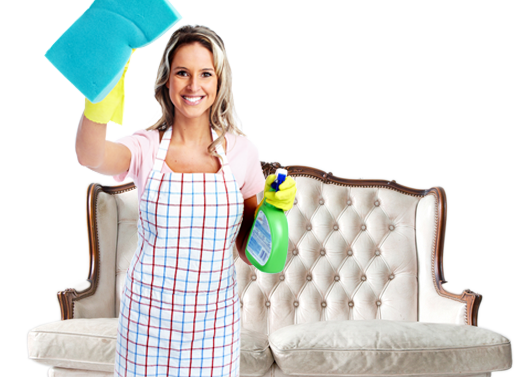Navigate End of Tenancy Cleaning like a Pro: Tenant Guide
Posted on 11/06/2025
Navigate End of Tenancy Cleaning like a Pro: Tenant Guide
Moving out of a rented property can be both exciting and overwhelming. Among the many tasks on your checklist, end of tenancy cleaning often stands out as the key to securing your deposit and leaving the property in top shape for the next occupants. Whether you're a first-time tenant or a seasoned renter, understanding how to navigate end of tenancy cleaning like a pro is crucial. This comprehensive tenant guide is designed to arm you with practical advice, checklists, and expert tips for a smooth, stress-free move.
Why End of Tenancy Cleaning Matters
End of tenancy cleaning refers to the process of deep cleaning your rental property before handing back the keys. While regular cleaning keeps the space tidy, move out cleaning requires extra attention to detail and aligns closely with your tenancy agreement. Landlords and letting agents expect the property to be restored to its original condition (allowing for fair wear and tear), and failing to meet these expectations can result in deposit deductions or even disputes.
- Protects your deposit: According to recent studies, cleanliness issues account for over half of deposit disputes in the UK alone.
- Complies with tenancy agreements: It is almost always a contractual obligation to pay for or carry out professional-level cleaning before vacating.
- Supports a smooth landlord handover: A sparkling property leaves a positive impression and can lead to quicker deposit returns.

Understanding Your Responsibilities as a Tenant
Before diving into your end of tenancy cleaning checklist, it's vital to understand what your landlord or letting agency expects from you. Typically, tenancy agreements outline the condition the property must be left in.
The Cleaning Clause
- Check your contract: Look for specific clauses about cleanliness or requirements for professional cleaning.
- Inventory and check-in reports: These documents assess the property's original state and will be used to compare the condition upon checkout.
- Type of property: Furnished properties may require additional attention, including upholstery and appliance cleaning.
Commonly Overlooked Areas
- Oven and range hood
- Carpets and upholstery
- Inside cupboards, drawers, and wardrobes
- Behind furniture and radiators
- Light switches, skirting boards, and door handles
DIY vs Professional End of Tenancy Cleaning
One of the big decisions to make is whether you'll tackle the cleaning yourself or hire a professional end of tenancy cleaning service. Both options come with pros and cons.
DIY Cleaning
- Cost-effective: Ideal for those on a budget.
- Control: You decide what gets the most attention.
- Time-consuming: Move-out cleaning can take anywhere from 4 to 12+ hours.
- Effort-intensive: A deep clean requires energy and attention to detail.
Professional End of Tenancy Cleaning Services
- Guaranteed results: Many companies offer deposit return guarantees.
- Specialist equipment: Industrial steam cleaners, carpet shampooers, and high-quality products.
- Saves time: Letting professionals handle the job means you can focus on your move.
- Potential cost: Upfront expense, but can be cost-effective if it secures the full deposit.
Tip: Some landlords require professional cleaning receipts as proof, especially for carpets or furnished properties. Always check your tenancy agreement!
Step-by-Step End of Tenancy Cleaning Checklist
A successful move-out cleaning process follows a logical, room-by-room system. Here is a pro-level cleaning checklist guaranteed to impress landlords and letting agents:
1. Gather Essential Cleaning Supplies
- Multi-purpose cleaner and disinfectant
- Oven and hob cleaner
- Glass and window cleaner
- Descaler for kettles, taps, and showerheads
- Microfiber cloths and sponges
- Vacuum and mop
- Carpet stain remover (or access to a carpet cleaning machine)
- Rubber gloves, bin bags, and scrubbing brushes
2. Start with the Kitchen
- Clean inside and outside of all cupboards and cabinets
- Scrub ovens, hobs, grills, and extractor fans (removable parts soaked)
- Wipe down countertops, sinks, and backsplash tiles
- Defrost and clean refrigerator and freezer (leave doors open to air dry)
- Sanitise microwaves, kettles, and other appliances
- Polish taps and descale where necessary
- Wash floors, paying close attention to corners
3. Tackle the Bathrooms
- Clean and descale sinks, taps, showers, and bathtubs
- Disinfect toilets inside and out
- Polish mirrors and glass doors
- Remove limescale from tiles and grout
- Wipe down bathroom cabinets, shelving, and radiators
- Mop floors and sanitize door handles
4. Living Spaces and Bedrooms
- Vacuum carpets, paying special attention to edges and under furniture
- Steam clean (if required by tenancy)
- Dust shelves, skirting boards, and window sills
- Clean light fixtures, switches, and plug sockets
- Wipe down doors, handles, and bannisters
- Remove any stains from upholstery or mattresses
- Spot-clean marks on walls (paint touch-up if necessary and permitted)
5. Finishing Touches
- Wash all interior windows and frames
- Check for cobwebs in corners, behind furniture, and ceiling lights
- Ventilate rooms to remove fumes and odours
- Replace burnt-out lightbulbs and check all fixtures
- Dispose of all garbage, recycling, and personal belongings
Bonus Tip: Refer to your initial inventory and check-in report as you go. This ensures nothing gets missed!
How to Avoid Deposit Deductions
Deposit protection schemes favour clarity and fairness. Here's how you can avoid common pitfalls and maximize your chances of a full deposit return:
- Document your work: Take before and after photos of every room for your records.
- Address wear and tear separately: Normal use is not the same as neglect. Highlight any pre-existing damage with your landlord.
- Be present at the final inspection: This allows you to clarify any misunderstandings on the spot.
- Keep receipts for professional services: including carpet or upholstery cleaning.
Top Pro Tips for Efficient End of Tenancy Cleaning
- Plan ahead: Start the cleaning process early, ideally before moving your belongings out. This gives you more access and fewer obstacles.
- Work from top to bottom: Gravity causes dust to fall, so always clean higher surfaces before floors.
- Focus on high-touch areas: Door handles, switches, and banisters are often scrutinized in inspections.
- Don't forget the outside: If your tenancy covers a garden, balcony, or garage, ensure these areas are tidy as well.
- Ask for feedback: When in doubt, reach out to your landlord or agent ahead of time for specific cleaning expectations.
Frequently Asked Questions About End of Tenancy Cleaning
Do I have to hire a professional cleaning company?
Not always. Check your tenancy contract. Many agreements ask for a "professional standard" rather than a professional service--with some exceptions for carpets and furnishings.
What happens if I miss something?
If the agent finds issues during the check-out inventory, you may be charged for cleaning or repairs, which are then deducted from your deposit.
Can the landlord force me to use a specific cleaning company?
No, as of recent legal updates, landlords cannot require tenants to use their preferred cleaning company. You are only required to return the property clean to the specified standard.
Is oven cleaning mandatory?
Yes. Kitchens, especially ovens and extractor fans, are among the most closely scrutinized areas during checkout. A dirty oven is the most cited reason for deposit deductions.

Final Checklist: Navigate End of Tenancy Cleaning Like a Pro
- Review your contract and inventory reports
- Decide between DIY or professional service
- Gather all required cleaning materials
- Work room by room, following a structured checklist
- Take dated photos for evidence
- Schedule your check-out inspection
- Request feedback and resolve any issues promptly
Conclusion
Navigating end of tenancy cleaning like a pro is a blend of careful planning, attention to detail, and knowing your rights as a tenant. Whether you opt for DIY cleaning or call in the professionals, following a thorough checklist and being proactive can help you secure your full deposit and move out on excellent terms.
Remember: A sparkling clean home benefits everyone involved--landlords, future tenants, and you as a responsible renter. For more expert tenancy tips and moving guides, be sure to check our additional resources and stay informed throughout your renting journey.



